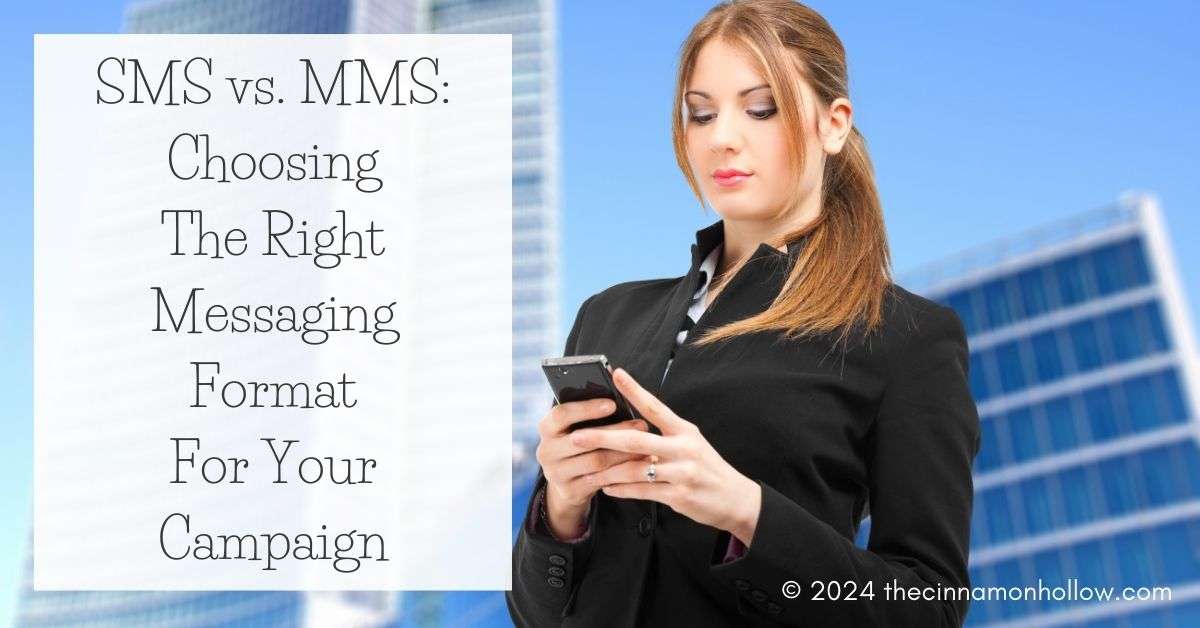Businesses often choose between SMS (Short Message Service) and MMS (Multimedia Messaging Service) when planning a messaging campaign. While both options offer direct communication with customers via mobile devices, they have distinct features and applications. SMS allows for the transmission of text-only messages, typically limited to 160 characters, whereas MMS enables the sending of multimedia content such as images, videos, and audio files alongside text. This article will explore the differences between SMS and MMS messaging formats and provide insights to help businesses choose the most suitable option for their campaigns.
SMS Messaging: Simplicity and Reach
SMS messaging, characterized by its simplicity and wide reach, remains popular for businesses looking to deliver concise and impactful messages to their audience. With SMS, businesses can directly convey essential information, such as promotional offers, appointment reminders, or transactional updates, to customers’ mobile phones. The text-only format of SMS ensures fast delivery and compatibility across all mobile devices, making it an accessible communication channel for reaching a broad audience. Moreover, SMS campaigns are cost-effective, as they typically involve lower fees than MMS, making them an attractive option for businesses with budget constraints or those targeting audiences with limited data connectivity.
MMS Messaging: Visual Appeal and Engagement
In contrast to SMS, MMS messaging offers enhanced visual appeal and engagement by allowing businesses to incorporate multimedia content into their messages. With MMS, companies can leverage images, videos, GIFs, and audio files to deliver recipients more immersive and interactive experiences. This multimedia-rich format enables businesses to showcase products, demonstrate features, or tell stories more compellingly and memorably, increasing the likelihood of capturing recipients’ attention and driving desired actions. While MMS messages can incur higher costs and require recipients to have compatible devices and data plans, they offer greater creative flexibility and potential for higher engagement rates compared to traditional text-based SMS.
Content Considerations: Choosing the Right Format
When deciding between SMS vs MMS for a messaging campaign, businesses must consider the nature of their content and the objectives they aim to achieve. Text-only messages are ideal for delivering concise information or urgent updates that require immediate attention, such as appointment reminders, order confirmations, or simple notifications. On the other hand, multimedia-rich content is more suitable for campaigns focused on branding, storytelling, product launches, or promotions that aim to captivate and engage recipients visually. By aligning the messaging format with the content and objectives of the campaign, businesses can maximize the effectiveness of their communication efforts and deliver messages that resonate with their target audience.
Audience Preferences and Demographics
Another factor to consider when choosing between SMS and MMS messaging is the preferences and demographics of the target audience. While SMS messages are universally compatible and accessible across all mobile devices, MMS messages can not be supported by older or basic phone models or require recipients to have sufficient data allowances to download multimedia content. Therefore, businesses targeting a diverse audience or those serving markets with varying levels of smartphone penetration should prioritize SMS to ensure message delivery to all recipients. Conversely, if the target audience consists predominantly of smartphone users with data connectivity, MMS messaging can be a more effective way to capture their attention and convey visually engaging content.
Compliance and Regulations
Businesses must also adhere to regulatory requirements and industry standards when implementing SMS and MMS messaging campaigns. Depending on the geographical location and target audience, specific regulations can govern the use of SMS and MMS for marketing or promotional purposes, such as obtaining consent from recipients or providing opt-out options. Failure to comply with these regulations can result in legal repercussions, fines, or damage to the brand’s reputation. Therefore, businesses need to familiarize themselves with relevant laws and guidelines and ensure that their messaging campaigns are conducted ethically and in accordance with best practices to maintain trust and credibility with their audience.
Conclusion:
In conclusion, the choice between SMS and MMS messaging formats depends on various factors, including the nature of the content, campaign objectives, audience preferences, and regulatory considerations. While SMS offers simplicity, reach, and cost-effectiveness for text-based messages, MMS provides greater visual appeal, engagement, and creative flexibility through multimedia content. By carefully assessing these factors and aligning the messaging format with the specific needs and preferences of their target audience, businesses can optimize the effectiveness of their messaging campaigns and achieve their communication goals. Regardless of the format, businesses must prioritize compliance with regulations and ethical practices to ensure a positive and impactful interaction with their customers.









